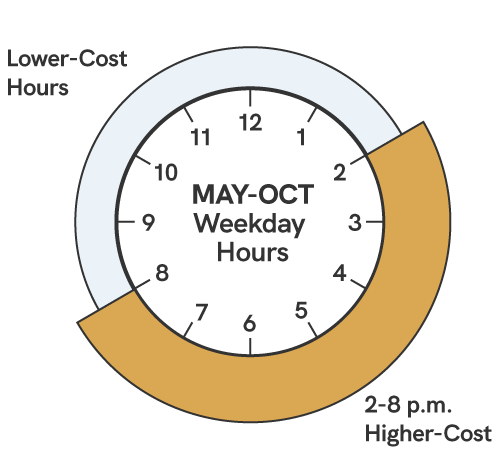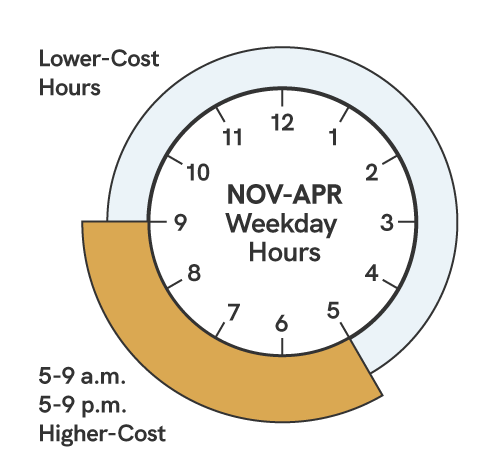
SRP Residential Demand Price Plan Pilot
If you can commit to using major appliances one at a time or during off-peak hours, the Residential Demand Price Plan Pilot can help you save.
On this page:
This price plan is discontinued
This price plan is no longer available for new enrollments and will be discontinued after the November 2029 billing cycle.
If you're currently enrolled in this plan, you may continue to be on it until the November 2029 billing cycle. SRP will notify you at least 120 days before the plan ends, so you have time to choose a new plan. You can also switch your plan any time before then.
Why is my price plan being discontinued?
On Feb. 27, 2025, SRP’s publicly elected Board approved the retirement of select price plans. To learn more about these changes, visit srp.net/resprices.
How it works
The Residential Demand Price Plan offers price breaks for customers who can be conscious of when they use energy and how much energy they’re using at one time.
To save on this plan, you’ll want to stagger the use of major appliances during on-peak hours. Putting appliances on a timer or an automated schedule can help.
You’ll pay less for energy all other hours, including weekends and on six observed holidays .


Understanding demand
With proper on-peak demand management, the Residential Demand Price Plan allows you to cut monthly energy costs. Billed demand has a unique and controllable pricing structure.
You can think of demand like a speedometer on a car. Using multiple appliances at once is the equivalent of driving fast; it uses more power at one time. On this plan, the goal is to drive at a slow and steady pace. You can do that by spreading out your energy use — staggering the use of major appliances — during on-peak hours.
Monthly demand charge
During on-peak hours, your household demand is measured in 30-minute intervals on the hour and every half-hour — from 2–2:30 p.m. and 2:30–3 p.m., for example.
A monthly demand charge is calculated per-kilowatt (kW), based on the interval in which your home uses the most electricity during on-peak hours.
Pricing
On this plan, your bill is calculated based on three charges:
Energy charge — This is the amount of power you consume over time. It’s measured in kilowatt-hours (kWh). Your monthly energy costs reflect how many kWh of energy your household has used during the billing cycle.
Demand charge — The demand charge is based on 30-minute intervals during on-peak hours when your home uses the most electricity and that electricity is most expensive.
Monthly service charge (MSC) — Your MSC helps cover the costs of customer service, billing and your connection to the grid.

Tier 1
If you’re in an apartment, condominium or townhome, your MSC will likely be $20.

Tier 2
If you’re in an average single-family home, your MSC will likely be $30.

Tier 3
If you’re in a larger-than-average single-family home with high power usage (i.e., you have multiple pool pumps, EV charging stations and/or multiple AC units), your MSC will likely be $40.
Ready to change your price plan?
Explore these price plans and see if any of them fit your needs:
- Conserve 6–9 p.m. and Save
- Manage Demand 5–10 p.m. and Save
- Basic Price Plan
- SRP M-Power® Prepaid Price Plan
Try for 90 days.
Interested in changing your plan? Use our price comparison display to find the plan that works best for you. Please note that you must be at your residence for at least 12 calendar months to access the price comparison display.
Try a new price plan for 90 days. If you like it after your trial, you can remain on the new plan. If it ends up not working out, you can return to your current plan. Visit SRP My Account™ or call (602) 236-8888 to make the switch. We’re here to help 24/7.
Need more info about the different charges that go into your rate? Download the Residential Demand Price Plan sheet
For more information, see our Compare Price Plans page.


